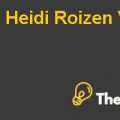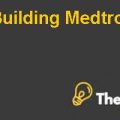
Total Productive Management and the Role of Employee Involvement Case Solution
Introduction
In the world of lean manufacturing or effective and efficient manufacturing processes, the modern supply chain management has introduced several ways to keep the production on the flow by eliminating wastes of factors such as time and inventory, among others.
On the other hand, the modern supply chain management has introduced many production techniques, which can make the production easier, better, \effective, and efficient. These techniques include lean manufacturing, Just in Time, QCM, QA, and TPM.
Moreover, these techniques have their own pros and cons but it has been noted that their pros have more weight age as compared to their cons since these techniques have allowed many companies to make their production system more effective, efficient, and less costly by reducing the time, eliminating the wastes along with fully utilizing the labor and other useful resources.
However, TPM is also derived from lean manufacturing but it also can be said that it is a part of lean manufacturing.I It involves proper utilization of resources, reduction of wastes as well as keeping the work on the flow by eliminating or minimizing accidents, reducing errors, rectifying, and eliminating defects from the manufacturing process and ultimately, from the manufactured goods.
This technique or process also faced some errors, since the traditional TPM was based on some different approaches and was designed differently as per the dynamics of the industry. However as per the passage of time, when the dynamics of the global industries changed, the meaning and purpose of TPM also changed with it.
The previous section was a short introduction of TPM and it’s link to the modern supply chain management. However, in this section, the writer discusses TMP and its transformation in detail.
Total Productivity Maintenance TPM and its Transformation
TPM is an approach used to make the manufacturing system more appropriate, effective, efficient, and error free by eliminating and reducing the following:
- Breakdowns
- Stops or breaks
- Defects
- Accidents
TPM closely works with a proactive and preventive approach of maintenance, which allows the production facility to increase operational efficiency of its equipment by removing the distinction between the role of production and maintenance by giving operators the authority to maintain their equipment.
In addition, the implementation of TPM program ensures the indolent of employees to check the performance of equipment in the manufacturing facility and empowering them to maintain it accordingly. However, this strategy allows the plant floor workers to stay on track with their performance of manufacturing plant and improve the overall production efficiency by increasing the production, reducing defects, and eliminating breakdown. (Manufacturing, 2016)
Traditional TPM
The basic objective of the traditional TPM was to increase the overall productivity by maintaining a clean and organized facility by using the 5S strategy. The five elements of this strategy consist of
- Sort
- Set In Order
- Shine
- Standardize
- Sustain
However, these were basic elements of the traditional TPM; since, Sort meant to sort all the unnecessary things, which are not part of the production process. While Set In Order meant to organize the required items. On the other hand, Shine means cleaning of the work area, while Standardize refers to make standards for the above activities. Lastly, Sustain means assurance of the set standards.
However, from the 5S approach, it can be clearly seen how the traditional TPM increased the overall productivity of any organization by making these 5 steps. It is very easy to find clean tools and handling on-going issues such as oil leaks or liquid spreads. For example, it is very easy to handle unexpected issues within the facility while keeping a clean and sustainable environment.
The Eight pillars of the traditional TPM
The eight pillars of TPM focus on a proactive and preventive approach to increase the overall productivity of the company. These eight pillars include:...........................
This is just a sample partial case solution. Please place the order on the website to order your own originally done case solution.













